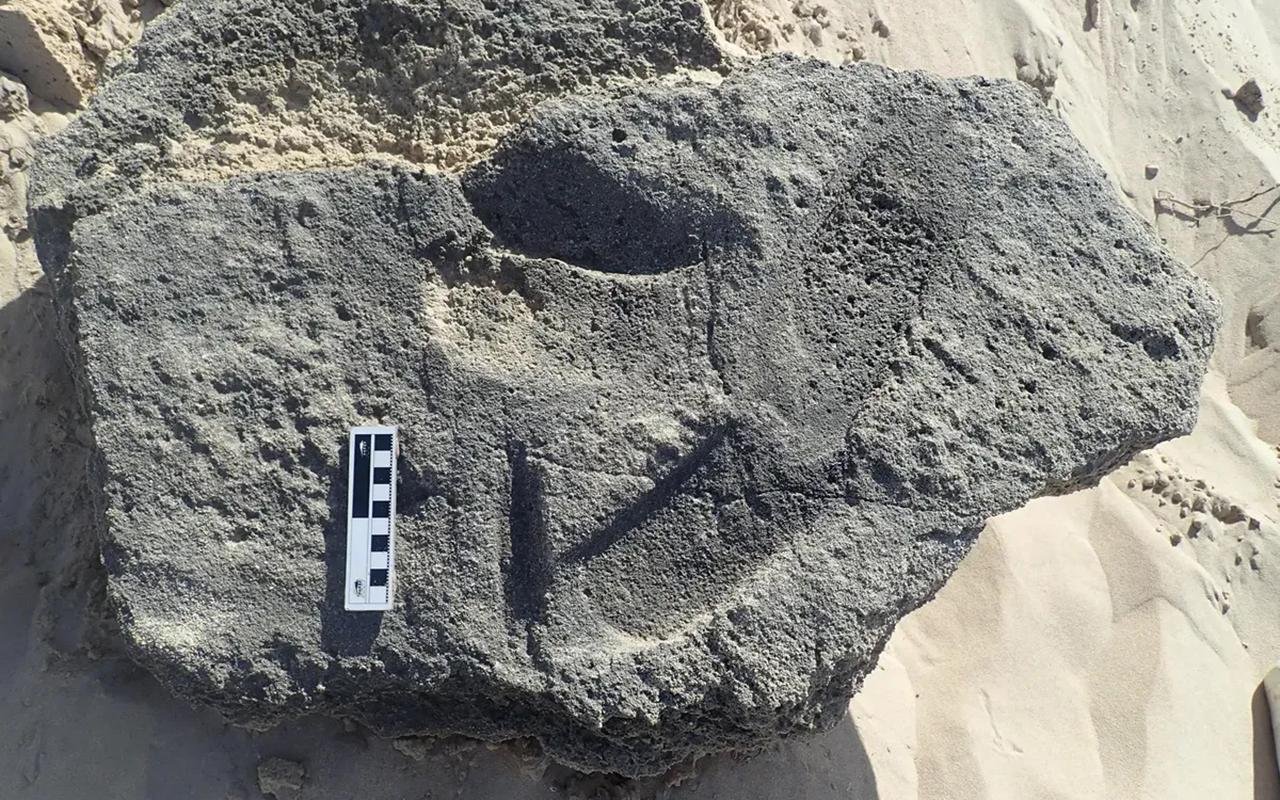Ancient footprints found in South Africa suggest that early humans might have worn hard-soled sandals
A recent study published in the journal Ichnos has brought attention to well-preserved markings on stone slabs found at three different locations along the Cape coast in South Africa. While these footprints have not been directly dated, researchers estimate that some of them may be between 73,000 and 148,000 years old based on the age of nearby rocks and sediments.
 The footprints at the Kleinkrantz site. Credit: Charles Helm
The footprints at the Kleinkrantz site. Credit: Charles Helm
Researchers are cautious about making definitive claims, but the characteristics of these footprints hint at the use of shoes in the Middle Stone Age. This discovery raises questions about the timeline of early shoe-wearing and its potential significance in protecting our ancestors’ feet.
What sets these footprints apart from barefoot human tracks is the absence of toes. Instead, they exhibit “rounded anterior ends, crisp margins, and possible evidence of strap attachment points.” According to the study’s authors, these tracks are consistent with those of hominin tracks and may have been made by either juvenile trackmakers or small-adult hominin trackmakers.
To test the hypothesis that these footprints could have been made by individuals wearing hard-soled sandals, researchers conducted experiments. They made their own footprints while wearing sandals similar to those historically used by the Indigenous San people of southern Africa, which are now housed in museums.
The results were telling: hard-soled footwear on wet sand produced prints with crisp edges, no toe marks, and indentations where the leather straps met the sole, resembling the markings found at the archaeological sites.
While the evidence is intriguing, researchers remain cautious about making conclusive statements. The difficulty of interpreting rock markings and the lack of direct evidence, such as actual shoes from the Middle Stone Age, contribute to their reluctance to draw firm conclusions.
“In all cases, the purported tracks have dimensions that are broadly consistent with those of hominin tracks,” write the study authors. They also speculate about the potential reasons for using such footwear, particularly in coastal environments where sharp rocks and sea urchins posed threats to foragers. In the Middle Stone Age, a significant foot injury could have been life-threatening, making sandals a practical choice for protection.
This discovery challenges previous notions about the history of footwear. Until now, the oldest known footwear consisted of woven bark shoes from Oregon, dating back around 10,000 years. Footwear discoveries in Israel and Armenia dated to approximately 5,500 years ago and the presence of sandals with Ötzi the Iceman, who lived over 5,000 years ago, offered glimpses into ancient shoe use. The previous oldest indication of footwear use came from Neanderthal children’s prints in a Greek cave dating back 130,000 years, although this interpretation remains debated.
To highlight the complexities of analyzing ancient tracks, the study authors referenced an instance where tracks in Nevada were initially thought to be made by a human wearing sandals but were later determined to be from a giant sloth. They emphasize the need for careful scrutiny in such studies.
This South African study contributes to the ongoing debate about when humans first started wearing shoes and the reasons behind this innovation. The potential use of sandals in the Middle Stone Age suggests that early humans may have been more resourceful and technologically advanced than previously thought.
Nevertheless, researchers acknowledge the need for further evidence and remain open to exploring the possibility of ancient footwear use as they continue their investigations.
This article is based on research published in the journal Ichnos.
More information: Helm, C. W. et al. (2023). Possible shod-hominin tracks on South Africa’s Cape coast, Ichnos, DOI: 10.1080/10420940.2023.2249585





